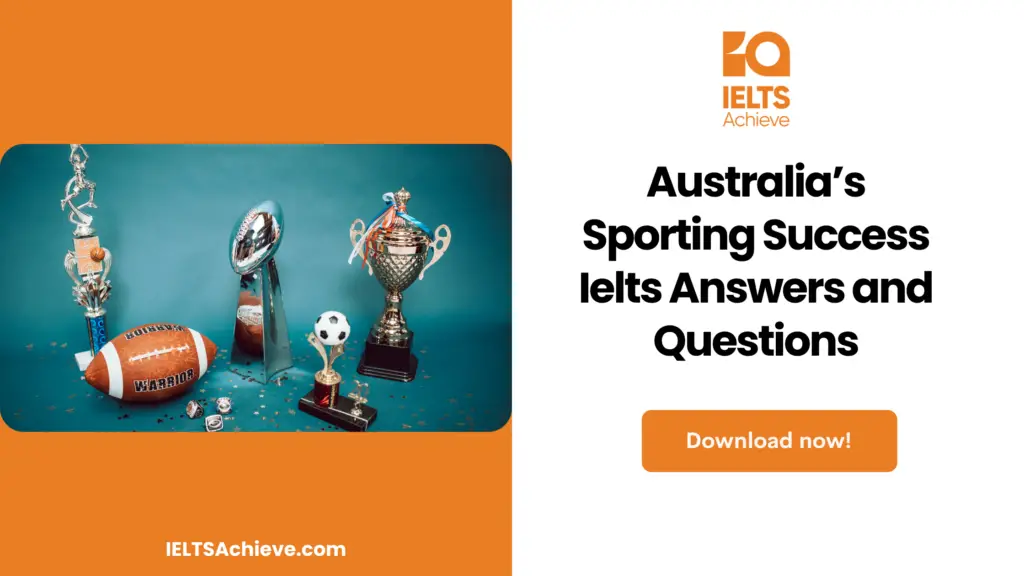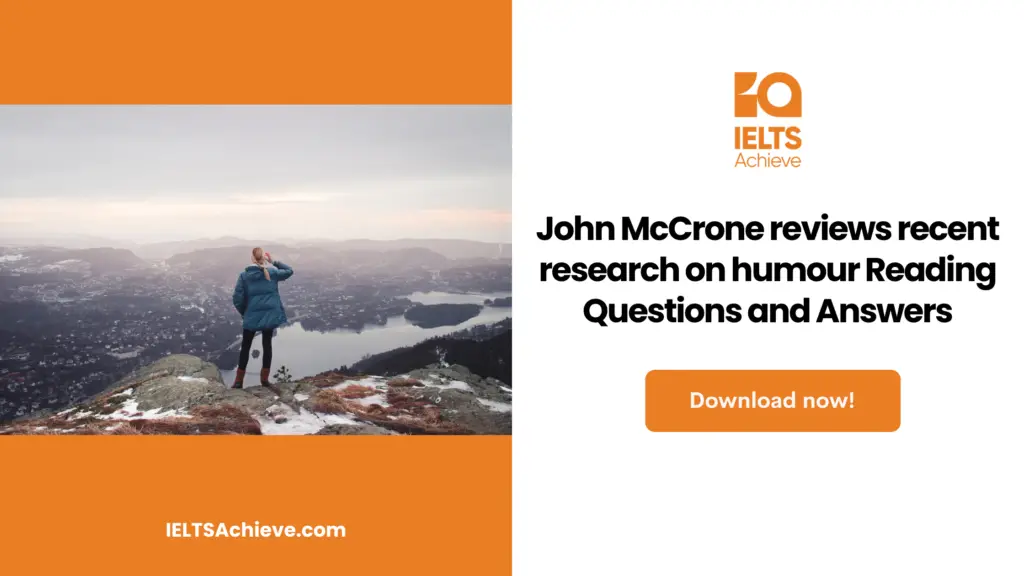The Blog post contains the following IELTS Reading Questions:
- IELTS Reading Locating Information
- IELTS Reading Matching Features
- IELTS Reading Short Answer Questions

IELTS Reading passage – Australia’s Sporting Success
Australia’s Sporting Success
Australians play very often, they play hard and they play to win only. Annihilating opponents with an easy-going demeanor, they win more championships than they even have a fair share of. What’s their secret? The secret behind their success is their sporting academic network which is hinged on science and medicine. Many young athletes and professionals train at the AIS which is the Australian Institute of Sports. Whereas, the other body called the Australian Sports Commission (ASC) provides finance to almost 96 sports programs for thousands of women and sportsmen. These two firms provide extensive instruction as well as facilities and nutritional guidance.
Science plays a vital role in academics. As many as 100 sports doctors and scientists are employed by the AIS, which collaborates with a plethora of colleges and research centers throughout the world. AIS scientists apply skills through numerous sports such as swimming and squash to building muscle strength in golfers. They’ve got plenty of technicians who design gadgets for collecting the athletes’ data. Their main aim is to win and everyone is focused on it. The chief of science at AIS, Peter Prickers says that ‘Etheral science questions are not important as long as it can’t help the coach to improve the athlete’s performance’.
Every athlete’s effort is scrutinized, from cyclists’ power to swimmers’ diving angle. Data is exploited to harm athletes. Individuals’ performances are tailored to shave off a tenth of a second here or a millimeter there for optimal efficiency. Even tiny changes over time can have a big impact. Small benefits are worth great effort. Bruce Mason of AIS validates how a 3D analysis tool for swimmers works. A champion swimmer’s wire-frame model divides the water in slow motion. Mason measures the distance between strokes and watches her spine’s spindle. Once the technology is complete, he’ll be able to produce a biomechanical profile for coaches to aid pullulate swimmers. Mason created the SWAN system utilized in Australian national competitions. It uses 50 fps digital cameras to capture a swimmer’s stroke length, frequency, median stroke duration, velocity, start, lap, finish times, etc. SWAN produces swimmer data after races.
Look at it now,’ Mason replies, pointing to a file of data. Data on the swimmers who finished in second and third place reveals that the third-place finisher swam faster than the second-place finisher. How did he lose 35 hundredths of a second at the finish line, then? Says Mason: “He’s turning timings were 44 hundredths of a second behind the other man.”‘ Improve his turns, and he’ll perform even better.’ A wide range of sports is benefiting from the research of AIS scientists. These sensors will be implanted in an athlete’s clothing or running shoes so that they can supervise heart rate, perspiration, heat generation, or any other factor that can affect an athlete’s ability to run. They are working with the Cooperative Research Centre for Micro Technology in Melbourne. Measurement isn’t the only way to go about it. As an example, Pricker cites the case of athletes, who may get sick up to 12 times a year. AIS and the University of Newcastle in New South Wales have matured a test that assesses the chunk of immune-system protein immunoglobulin A in athletes’ saliva after years of trial. The intensity of exercise is reduced or halted if lgA levels fall too low. The risk is over when lgA levels begin to rise again. Athletes from all sports at the AIS have been exceptionally healthy since the tests were established.
Using data is a difficult task. Sports scientists and coaches begin preparing athletes well before a championship by building a ‘competition model’ based on what they expect in winning times. Mason says, “You create the model to make that time.” At the start of this much, each free-swimming period has to be this fast, with a specific stroke frequency and stroke length, and all turns must be completed within these durations. The athlete’s whole training regimen is therefore aimed toward achieving those goals, both overall and for each race phase. These techniques have helped Australia become probably the most successful sporting nation on the planet.
Obviously, nothing is stopping other nations from replicating, and many have tried. The AIS unveiled coolant-lined jackets for endurance athletes several years ago. At the 1996 Olympic Games in Atlanta, these sliced as much as two percent off the timings of cyclists and rowers. Everyone now utilizes them. The same has occurred with AIS’s “altitude tent,” which was designed to simulate the effects of altitude training at sea level. But Australia’s success story is based on more than easily reproducible technological fixes, and no nation has yet imitated its comprehensive system.
Australia’s Sporting Success IELTS Reading Questions
Questions 1-7
Reading Passage has six paragraphs, A-F.
Which paragraph contains the following information?
Write the correct letter, A-F, in the boxes 1-7 on your answer sheet.
NB you may use any letter more than once
- a reference to the exchange of expertise between different sports
- an explanation of how visual imaging is employed in investigations
- a reason for narrowing the scope of research activity
- how some ais ideas have been reproduced
- how obstacles to optimum achievement can be investigated
- an overview of the funded support of athletes
- how performance requirements are calculated before an event
Unlock your full potential in the IELTS Reading section – Visit our IELTS Reading Practice Question Answer page now!
Recommended Questions:
Renewable Energy IELTS Reading Question with Answer
IELTS Reading Matching Features Questions 8-11
Classify the following techniques according to whether the writer states they
- are currently exclusively used by australians
- will be used in the future by australians
- are currently used by both australians and their rivals
Write the correct letter A, B, or C in boxes 8-11 on your answer sheet.
8. Cameras
9. Sensors
10. Protein tests
11. Altitude tents
Improve your performance in Matching Features questions by clicking here to access our comprehensive guide. Learn how to match specific features or characteristics with the options provided in the IELTS Reading section.
IELTS Reading Short Answer
Questions 12-13
Choose NO MORE THAN THREE WORDS AND/OR A NUMBER from the reading passage 1 for each answer.
Write your answers in boxes 12 and 13 on your answer sheet.
12. What is produced to help an athlete plan their performance in an event?
13. By how much did some cyclists’ performance improve at the 1996 Olympic Games?
Australia’s Sporting Success IELTS Reading Answers
1. B
2. C
3. B
4. F
5. D
6. A
7. E
8. A
9. B
10. A
11. C
12. (a) competition model
13. (by) 2 percent/%

We hope you found this post useful in helping you to study for the IELTS Test. If you have any questions please let us know in the comments below or on the Facebook page.
The best way to keep up to date with posts like this is to like us on Facebook, then follow us on Instagram and Pinterest. If you need help preparing for the IELTS Test, join the IELTS Achieve Academy and see how we can assist you to achieve your desired band score. We offer an essay correction service, mock exams and online courses.
